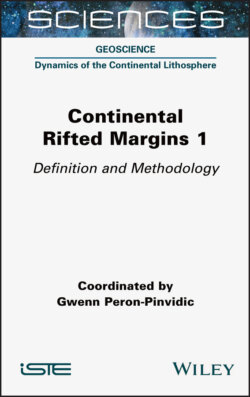Читать книгу Continental Rifted Margins 1 - Gwenn Peron-Pinvidic - Страница 19
Case example: The East African Rift
ОглавлениеThe East African Rift (EAR) covers a broad region of East Africa and encompasses a series of discrete fault-bounded valleys organized into distinct rifts, branches and plateaus (Figure 1.5). The EAR is considered to be the archetype of active intracontinental rifts. The EAR contains several distinct sectors, from the Red Sea, Gulf of Aden and Afar region in the North to the eastern and western branches southward on the African continent. The eastern branch crosses the Ethiopian Plateau and includes two main segments: the Main Ethiopian Rift and the Kenyan rift. The western branch contours along the East African Plateau and Tanzania Craton and includes the East African Great Lakes and particularly the Lake Albert and Albertine Rifts. The western branch continues south-eastward with the Malawi Rift towards the Mozambique Channel.
The regional architecture can be described as a series of grabens of various dimensions, arranged in an en-échelon geometry within the different branches. Typically, the basins are flanked by chains of normal faults which shift polarity along-strike through transfer zones (Chorowicz 2005; Ebinger 2005; Corti 2009). The basins are usually asymmetric, up to 7 km deep, and bordered by 70–120 km long normal faults that accommodate dip-slip movements. The Kenyan and Ethiopian branches are magmatically dominated and the successive stages of rift evolution are preserved (Keranen et al. 2004; Rooney et al. 2005). The extensional geometries are so evident at the tectonic plate-scale that researchers have already named the new “plates-to-be”: the Nubian plate, which corresponds to the western lands and encompassing most of Africa, and the Somalian plate, which is pulling away eastward (Bird 2003). The plates are separating at a rate of 6–7 mm yr-1 (Corti 2009) and should reach a lithospheric rupture in about 10 Ma. These two plates meet the Arabian plate in the north at a triple junction situated in the Ethiopian Afar region (Figure 1.5).
The geological reason and exact mechanisms responsible for the formation of the EAR are debated. Dating volcanic rocks from the Main Ethiopian Rift indicates that the rifting process probably began ~30 Ma ago with the eruption of voluminous flood basalts, which resulted in the formation of the Ethiopian and Somalian plateaus (Corti 2009; Rooney 2017). The basins’ initiations are diachronous along the EAR with distinct episodes of extension followed by periods of relative tectonic quiescence. The fault systems responsible for the formation of the separate rift basins are understood to date from Oligocene and Mio-Pliocene times (Chorowicz 2005).
The observation and mapping of thick volcanic sequences apparently emplaced before the rift-faulting events favored the development of plume theories. Since the observations are not straightforward to interpret and the models multiple, several plume hypotheses have been developed. These invoke the presence of several distinct localized plumes (Kenya, Ethiopia, Arabia) (Montelli et al. 2006), a super-plume (Ebinger and Sleep 1998; Bastow et al. 2008) or a composite scenario including a deep plume originating at the core–mantle boundary and feeding multiple plume-stems in the upper mantle beneath the EAR (Hansen et al. 2012). Tectonic theories focus instead on the regional tectonic setting; the development of extensional stresses is due to plate reorganization from a ridge jump in the Indian Ocean (Burke 1996). Mantle convection cells activated due to lithospheric thinning (producing thermal gradients) and/or similar, cratonic-edge-driven cells can then explain melt genesis and volcanic intrusions and extrusions (King and Ritsema 2000). Ongoing discussions and debates may today favor a composite origin with both plate tectonics and plume magmatism contributing to the extensional geometries, with feedback effects on one another (Rooney 2017, 2019, 2020a, 2020b, 2020c).
